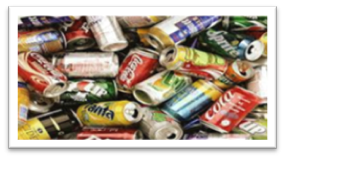Writing About How to Recycle Used Products

Aluminium Cans
On average, we drink one beverage from an aluminium can every day. However, we recycle just over 49% of the cans we use. Recycling one aluminium can saves enough energy to run a television for three hours. Let ‘s have a closer look at how an aluminium can is
A Day in the Life of Recycled Cans
First, Customer puts them into a recycling bin. Then, the cans are transported to a processing facility. After that, they drop down to a conveyor belt and are gathered. Later, the cans are shredded, washed and turned into aluminium chips. Next, the chips are melted in a large furnace, and the melted aluminium is poured into moulds called "ingots". Afterwards, the ingots are taken to a factory where they're melted into rolls of thin, flat sheets. In the end, from the sheets, manufacturers make new drink cans.
Lexis:
Customer: someone who buys goods or services from a shop, company
Recycling bin: a container for putting recyclable used products.
Drop down: to go down.
Shred (v): to cut or tear something into small thin pieces.
Furnace: a large container for a very hot fire, used to produce power, heat, or liquid metal.
Melt: if something solid melts or if heat melts it, it becomes liquid.
Let us have another look at how drink cans made of aluminium are recycled through pictures.

A/ When describe a process, we mark the sequence of each action with a sequencers and most of the verbs are in the passive voice.
- Why do we use sequencers?
We do so for better organization.
- Why are most of the verbs in the passive voice?
We do so since we are interested in the action and its result. In the case of the process of the recycling of drink cans, the first verb is in the active voice so as to insist on the fact that you and I must put cans into the recycling bins.
B/ Reminder
I. A reminder of sequencers used to describe a process of making any product:
| First, then, after that, next, later, afterwards, finally/ in the end |
II. A reminder of the present simple in the passive voice.
| Subject + is/ are +past participle + (by agent) |
- Nota Bene:
- If the verb is regular, we add the prefix “ed” to the verb.
- “By agent” is between brackets because we don’t have to mention it.
- إختبارات
- 9
- الأجوبة الصحيحة
- False
- الأجوبة الخاطئة
- False
- مجموع النقاط
- False
المراتب الخمس الأولى في Quiz
- Abadou op18
- 157 نقطة
-

- Fatiha Boudoukha
- 100 نقطة
-

- Mamour Samir
- 81 نقطة
-









